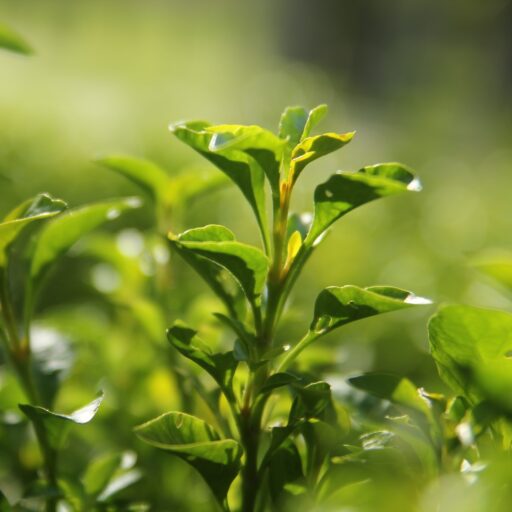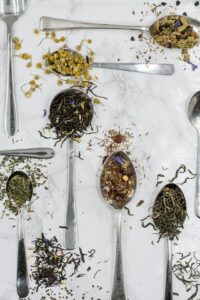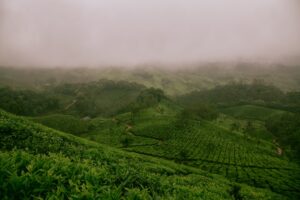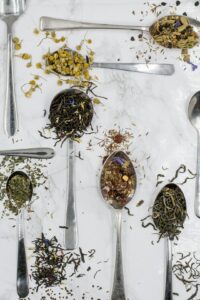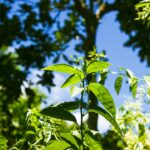Support our educational content for free when you purchase through links on our site. Learn more
[2023] Is it Difficult to Grow Tea? A Comprehensive Guide
Quick Answer: Growing tea can be a rewarding and enjoyable experience, but it does require knowledge, patience, and attention to detail. With the right conditions, proper care, and a little bit of practice, you can successfully grow your own tea at home. However, it’s important to note that tea plants have specific requirements and can be sensitive to changes in climate and soil conditions. Overall, while growing tea may present some challenges, it is definitely possible with the right approach and dedication.
Table of Contents
- Quick Answer
- Quick Tips and Facts
- How Long Does it Take to Grow Tea?
- How Hard is it to Grow Your Own Tea?
- Why Doesn’t the US Grow Tea?
- Can Tea be Grown in the US?
- Factors Affecting Tea Growth
- Choosing the Right Tea Plant Variety
- Preparing the Soil for Tea
- Planting Tea
- Caring for Tea Plants
- Harvesting and Processing Tea Leaves
- FAQ
- Conclusion
- Recommended Links
- Reference Links
Quick Answer
Growing tea can be a rewarding and enjoyable experience, but it does require knowledge, patience, and attention to detail. With the right conditions, proper care, and a little bit of practice, you can successfully grow your own tea at home. However, it’s important to note that tea plants have specific requirements and can be sensitive to changes in climate and soil conditions. Overall, while growing tea may present some challenges, it is definitely possible with the right approach and dedication.
Key Answer: Yes, it is possible to grow tea, but it requires knowledge, patience, and attention to detail.
Quick Tips and Facts
- Tea plants (Camellia sinensis) are evergreen shrubs native to East Asia.
- Tea can be grown in both tropical and subtropical regions.
- The two main types of tea plants are Camellia sinensis var. sinensis (Chinese tea) and Camellia sinensis var. assamica (Indian tea).
- Tea plants can be grown from seeds or cuttings.
- Tea plants require well-drained soil with a pH level between 5.5 and 6.5.
- Tea plants prefer a humid climate with temperatures ranging from 50°F to 86°F (10°C to 30°C).
- Tea leaves are typically harvested when they are young and tender.
- The processing method determines the type of tea produced (e.g., black tea, green tea, oolong tea).
How Long Does it Take to Grow Tea?
The time it takes to grow tea depends on several factors, including the variety of tea plant, climate, and cultivation practices. On average, it takes about 2 to 3 years for a tea plant to reach maturity and produce its first harvest. However, it’s important to note that tea plants can continue to grow and produce leaves for many years, with some plants living for over a century.
Key Point: It takes around 2 to 3 years for a tea plant to reach maturity and produce its first harvest.
How Hard is it to Grow Your Own Tea?
Growing your own tea can be challenging, but with the right knowledge and practices, it is definitely achievable. Here are some factors to consider:
1. Climate: Tea plants thrive in a humid climate with temperatures ranging from 50°F to 86°F (10°C to 30°C). If you live in a region with extreme temperatures or dry conditions, you may need to create a suitable microclimate for your tea plants.
2. Soil: Tea plants require well-drained soil with a pH level between 5.5 and 6.5. Conduct a soil test to determine if your soil meets these requirements. If necessary, you can amend the soil to create a suitable environment for tea cultivation.
3. Watering: Tea plants need consistent moisture but are also sensitive to waterlogging. Proper watering practices, such as watering deeply and allowing the soil to dry slightly between waterings, are essential for the health of your tea plants.
4. Pruning: Regular pruning helps to maintain the shape of the tea plants, promote healthy growth, and improve air circulation. Pruning also encourages the production of new shoots, which are typically used for tea production.
5. Pest and Disease Control: Tea plants can be susceptible to various pests and diseases, including aphids, mites, and fungal infections. Regular monitoring, proper sanitation, and the use of organic pest control methods can help protect your tea plants.
While growing tea may require some effort and attention, the satisfaction of harvesting and processing your own tea leaves makes it worth the effort.
Key Point: Growing tea requires knowledge, patience, and attention to detail, but it is achievable with the right practices.
Why Doesn’t the US Grow Tea?
The United States has a diverse climate, with varying temperatures and soil conditions across different regions. While tea can be grown in certain parts of the US, it is not as widely cultivated as in countries like China, India, or Japan. Here are a few reasons why tea production is limited in the US:
1. Climate: Tea plants prefer a humid climate with temperatures ranging from 50°F to 86°F (10°C to 30°C). The US has a range of climates, but only a few regions have the ideal conditions for tea cultivation. The Southeastern states, such as South Carolina and Georgia, have a more suitable climate for tea production.
2. Market Demand: The US tea market is dominated by imported teas from countries like China, India, and Japan. With such a wide variety of imported teas available, there may be less incentive for farmers to invest in tea cultivation.
3. Lack of Infrastructure: Tea cultivation requires specific infrastructure, including processing facilities and expertise in tea production. In regions where tea cultivation is not well-established, the lack of infrastructure can be a barrier to entry for farmers.
Key Point: The US has diverse climates, but only a few regions have the ideal conditions for tea cultivation. The market demand and lack of infrastructure also contribute to the limited tea production in the US.
Can Tea be Grown in the US?
Yes, tea can be grown in certain parts of the US, particularly in the Southeastern states. Areas with a similar climate to tea-growing regions in East Asia, such as South Carolina and Georgia, have seen successful tea cultivation. With the right conditions and cultivation practices, it is possible to grow tea in the US.
Key Point: Tea can be grown in the US, particularly in the Southeastern states with a suitable climate.
Factors Affecting Tea Growth
Several factors can significantly impact the growth and cultivation of tea plants. Understanding these factors is essential for successful tea cultivation. Let’s explore the key factors:
Climate
Tea plants thrive in a humid climate with temperatures ranging from 50°F to 86°F (10°C to 30°C). They require a consistent and moderate amount of rainfall throughout the year. Extreme temperatures, frost, or prolonged drought can negatively affect tea plants and reduce their yield.
Soil
Tea plants prefer well-drained soil with a pH level between 5.5 and 6.5. The soil should be rich in organic matter and provide good aeration. Conducting a soil test can help determine if your soil meets these requirements. If necessary, you can amend the soil with organic matter, such as compost or well-rotted manure, to improve its fertility and drainage.
Altitude
Altitude plays a crucial role in tea cultivation, as it affects the flavor and quality of the tea leaves. Generally, higher altitudes result in slower leaf growth and the development of more complex flavors. However, different tea varieties have specific altitude requirements. For example, some high-quality green teas are grown at lower altitudes, while certain oolong teas thrive at higher altitudes.
Key Point: The climate, soil conditions, and altitude greatly influence the growth and cultivation of tea plants.
Choosing the Right Tea Plant Variety
There are several varieties of tea plants available, but the two main types are Camellia sinensis var. sinensis (Chinese tea) and Camellia sinensis var. assamica (Indian tea). Here’s a brief overview of each:
-
Camellia sinensis var. sinensis: This variety is commonly used for making green teas and is known for its delicate flavor and aroma. It is well-suited to cooler climates and can tolerate frost.
-
Camellia sinensis var. assamica: This variety is mainly used for making black teas and is known for its robust flavor and larger leaves. It is well-suited to warmer climates and can tolerate higher temperatures.
When choosing a tea plant variety, consider the climate and growing conditions in your area. Some varieties may be better suited to your specific climate and will have a higher chance of success.
Key Point: Choose a tea plant variety that is well-suited to your climate and growing conditions.
Preparing the Soil for Tea
Before planting tea, it’s essential to prepare the soil to create a suitable environment for tea cultivation. Here are the steps to prepare the soil:
-
Soil Testing: Conduct a soil test to determine the pH level and nutrient content of your soil. This will help you identify any deficiencies or imbalances that need to be addressed.
-
pH Adjustment: Tea plants prefer slightly acidic soil with a pH level between 5.5 and 6.5. If your soil pH is outside this range, you can adjust it by adding organic matter or applying soil amendments like elemental sulfur or agricultural lime.
-
Improving Drainage: Tea plants require well-drained soil. If your soil has poor drainage, you can improve it by adding organic matter, such as compost or well-rotted manure. This will help improve soil structure and water infiltration.
-
Mulching: Apply a layer of organic mulch around the base of the tea plants to conserve moisture, suppress weed growth, and improve soil fertility. Organic materials like straw, wood chips, or compost can be used as mulch.
By preparing the soil properly, you can create an optimal growing environment for your tea plants.
Key Point: Prepare the soil by conducting a soil test, adjusting the pH if necessary, improving drainage, and applying organic mulch.
Planting Tea
Tea plants can be propagated from seeds or cuttings. Here’s a guide on how to plant tea using both methods:
From Seeds
-
Seed Collection: Collect seeds from ripe tea plant fruits (camellia sinensis) in the fall. Clean the seeds and remove any pulp or debris.
-
Seed Stratification: Tea seeds require a period of cold stratification to break dormancy. Place the cleaned seeds in a plastic bag with a moist paper towel and refrigerate them for 2 to 3 months.
-
Seed Sowing: Fill seed trays or pots with a well-draining potting mix. Plant the tea seeds about 1/4 inch deep and lightly cover them with soil. Water the seeds gently to ensure the soil is evenly moist.
-
Germination and Transplanting: Place the seed trays or pots in a warm and well-lit area. Tea seeds typically germinate within 2 to 4 weeks. Once the seedlings have grown to a suitable size, transplant them into larger pots or directly into the ground.
From Cuttings
-
Cutting Selection: Select healthy and mature tea plant stems for cuttings. The stems should be approximately 6 to 8 inches long and have several sets of leaves.
-
Cutting Preparation: Remove the lower leaves from the stem, leaving only a few sets of leaves at the top. Dip the cut end of the stem in a rooting hormone to promote root development.
-
Rooting Medium: Fill a pot or tray with a well-draining rooting medium, such as a mixture of perlite and peat moss. Make small holes in the medium using a pencil or similar object.
-
Rooting Process: Insert the prepared tea cuttings into the holes in the rooting medium. Gently press the medium around the cuttings to secure them in place. Water the cuttings lightly to settle the medium.
-
Rooting Environment: Place the pot or tray in a warm and humid environment, such as a greenhouse or a propagator. Maintain the humidity by covering the cuttings with a plastic bag or a clear plastic dome.
-
Rooting Success: After a few weeks, check for signs of rooting by gently tugging on the cuttings. If there is resistance, it indicates that roots have formed. Once rooted, transplant the cuttings into larger pots or directly into the ground.
Key Point: Tea plants can be propagated from seeds or cuttings. Follow the appropriate method to plant tea based on your preference and available resources.
Caring for Tea Plants
Proper care is essential for the health and growth of tea plants. Here are some key aspects to consider when caring for tea plants:
Watering
-
Watering Frequency: Tea plants require consistent moisture, especially during the growing season. Water the plants deeply, ensuring the soil is evenly moist. Avoid overwatering, as tea plants are sensitive to waterlogging.
-
Irrigation Methods: Drip irrigation or soaker hoses are ideal for providing consistent moisture to tea plants. These methods help deliver water directly to the roots while minimizing water loss through evaporation.
Fertilizing
-
Organic Fertilizers: Use organic fertilizers, such as compost or well-rotted manure, to provide essential nutrients to the tea plants. Apply the fertilizer in early spring and again in late summer or early fall.
-
Slow-Release Fertilizers: Slow-release fertilizers can also be used to provide a steady supply of nutrients over an extended period. Follow the manufacturer’s instructions for application rates and timings.
Pruning
-
Pruning Time: Prune tea plants during the dormant season, typically in late winter or early spring, before new growth begins. Avoid pruning during the active growing season, as it may negatively impact the plant’s growth and development.
-
Pruning Techniques: Remove any dead or damaged branches, as well as weak or crowded growth. Prune to maintain the desired shape and size of the tea plant. Regular pruning helps promote healthy growth and the production of new shoots.
Pest and Disease Control
-
Monitoring: Regularly inspect your tea plants for signs of pests or diseases. Look for common tea pests like aphids, mites, or tea leafhoppers. Also, be vigilant for any signs of fungal infections or leaf discoloration.
-
Organic Pest Control: Use organic pest control methods, such as neem oil or insecticidal soaps, to manage common pests. Beneficial insects like ladybugs or lacewings can also help control pest populations.
-
Disease Management: Maintain good sanitation practices by removing fallen leaves and debris from around the tea plants. This helps reduce the risk of fungal infections. If necessary, apply organic fungicides to manage fungal diseases.
Key Point: Proper watering, fertilizing, pruning, and pest control are essential for the health and growth of tea plants.
Harvesting and Processing Tea Leaves
Tea leaves are typically harvested when they are young and tender. The timing and method of harvesting depend on the type of tea you want to produce. Here are some general guidelines:
-
Green Tea: Harvest the top two leaves and the unopened bud. These young leaves are rich in flavor. Avoid harvesting older leaves, as they can result in a bitter taste.
-
Black Tea: Harvest the top three leaves and the unopened bud. These leaves are fully mature and have a higher concentration of compounds that contribute to the characteristic flavor of black tea.
-
Oolong Tea: Harvest the top three to four leaves and the unopened bud. The leaves should be partially oxidized to produce oolong tea’s unique flavor profile.
After harvesting, the tea leaves need to be processed to stop oxidation and bring out the desired flavors. The processing methods vary depending on the type of tea. Common steps include withering, rolling, oxidation, and drying. Each step contributes to the unique characteristics of the final tea product.
Key Point: Harvest tea leaves when they are young and tender. The processing methods vary depending on the type of tea you want to produce.
FAQ
Is it possible to grow tea indoors?
Yes, it is possible to grow tea indoors, particularly in containers. Tea plants can adapt to indoor conditions if provided with adequate sunlight, humidity, and proper care. Choose a suitable tea plant variety and ensure it receives at least 6 hours of sunlight per day. Indoor tea plants may require additional humidity, which can be achieved by using a humidifier or placing the plants on trays filled with water and pebbles.
Can I grow tea in containers?
Yes, tea can be grown in containers, making it a suitable option for those with limited garden space. Choose a large container with good drainage and fill it with a well-draining potting mix. Place the container in a location that receives at least 6 hours of sunlight per day. Regularly monitor the moisture levels and water the tea plant as needed. Prune the plant to maintain its size and shape.
How much tea can one plant produce?
The yield of tea plants can vary depending on several factors, including the variety, age of the plant, growing conditions, and cultivation practices. On average, a mature tea plant can produce anywhere from 100 grams to 500 grams of processed tea leaves per year. However, it’s important to note that the yield can be influenced by various factors, and it may take several years for a tea plant to reach full productivity.
What are the most common tea plant varieties?
The most common tea plant varieties are Camellia sinensis var. sinensis (Chinese tea) and Camellia sinensis var. assamica (Indian tea). These varieties are widely cultivated and used for producing various types of teas, including green tea, black tea, and oolong tea. There are also other tea plant varieties, such as Camellia sinensis var. cambodiensis and Camellia sinensis var. pubilimba, which are less common but still used in tea production.
Key Points:
- Tea can be grown indoors and in containers with the right conditions and care.
- The yield of tea plants can vary, but a mature plant can produce anywhere from 100 grams to 500 grams of processed tea leaves per year.
- The most common tea plant varieties are Camellia sinensis var. sinensis and Camellia sinensis var. assamica.
Conclusion
Growing tea can be a fulfilling and rewarding experience, allowing you to enjoy the process from planting to harvesting and processing your own tea leaves. While it may present some challenges, such as climate and soil requirements, with the right knowledge, patience, and care, it is definitely possible to grow tea at home. Remember to choose the right tea plant variety, provide suitable growing conditions, and follow proper cultivation practices. With dedication and a love for tea, you can create your very own homegrown tea.
Recommended Links
- Shop Tea Plants on Amazon | Walmart | Etsy
- Shop Tea Seeds on Amazon | Walmart | Etsy
- Shop Tea Tools and Accessories on Amazon | Walmart | Etsy
